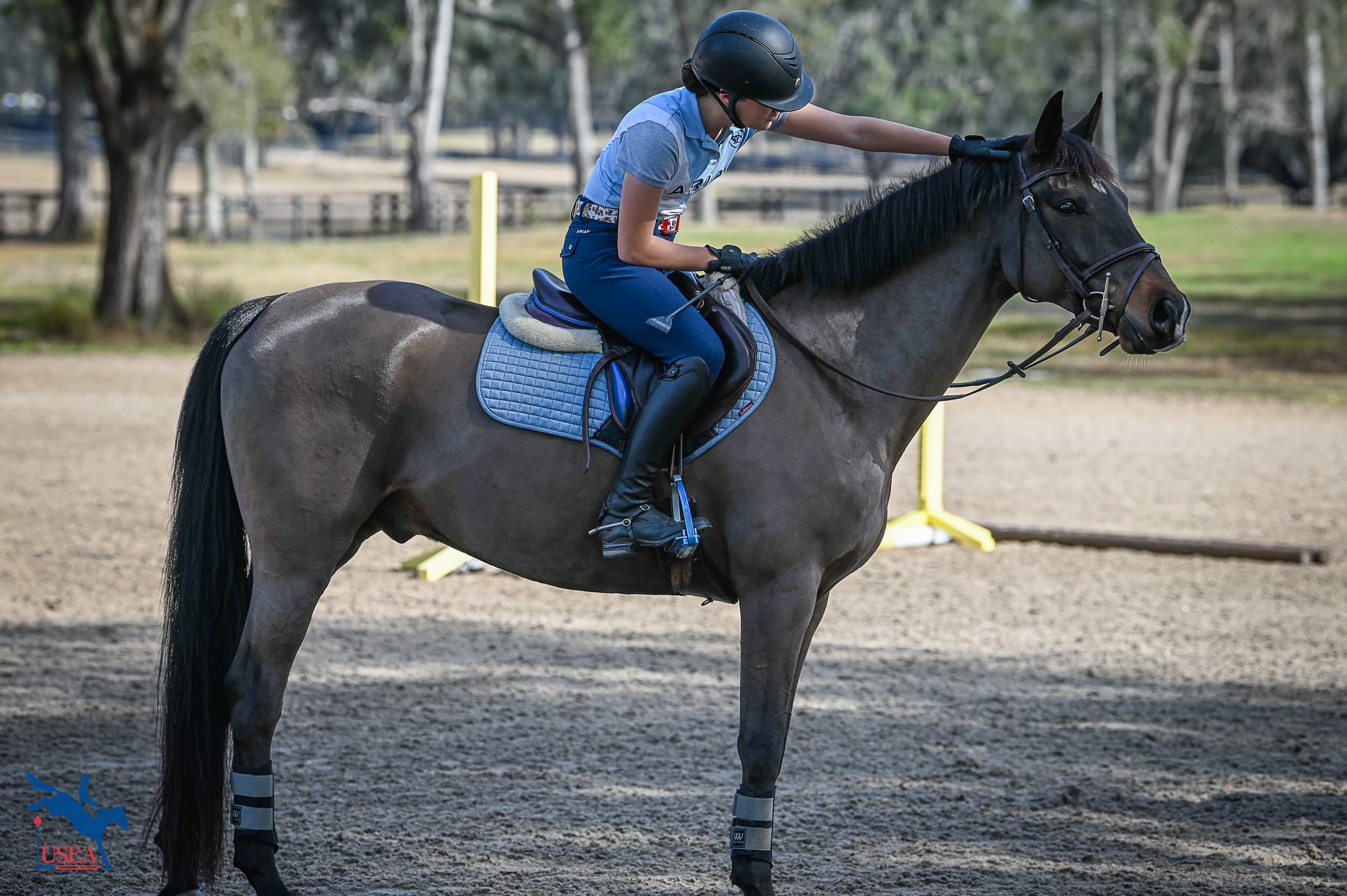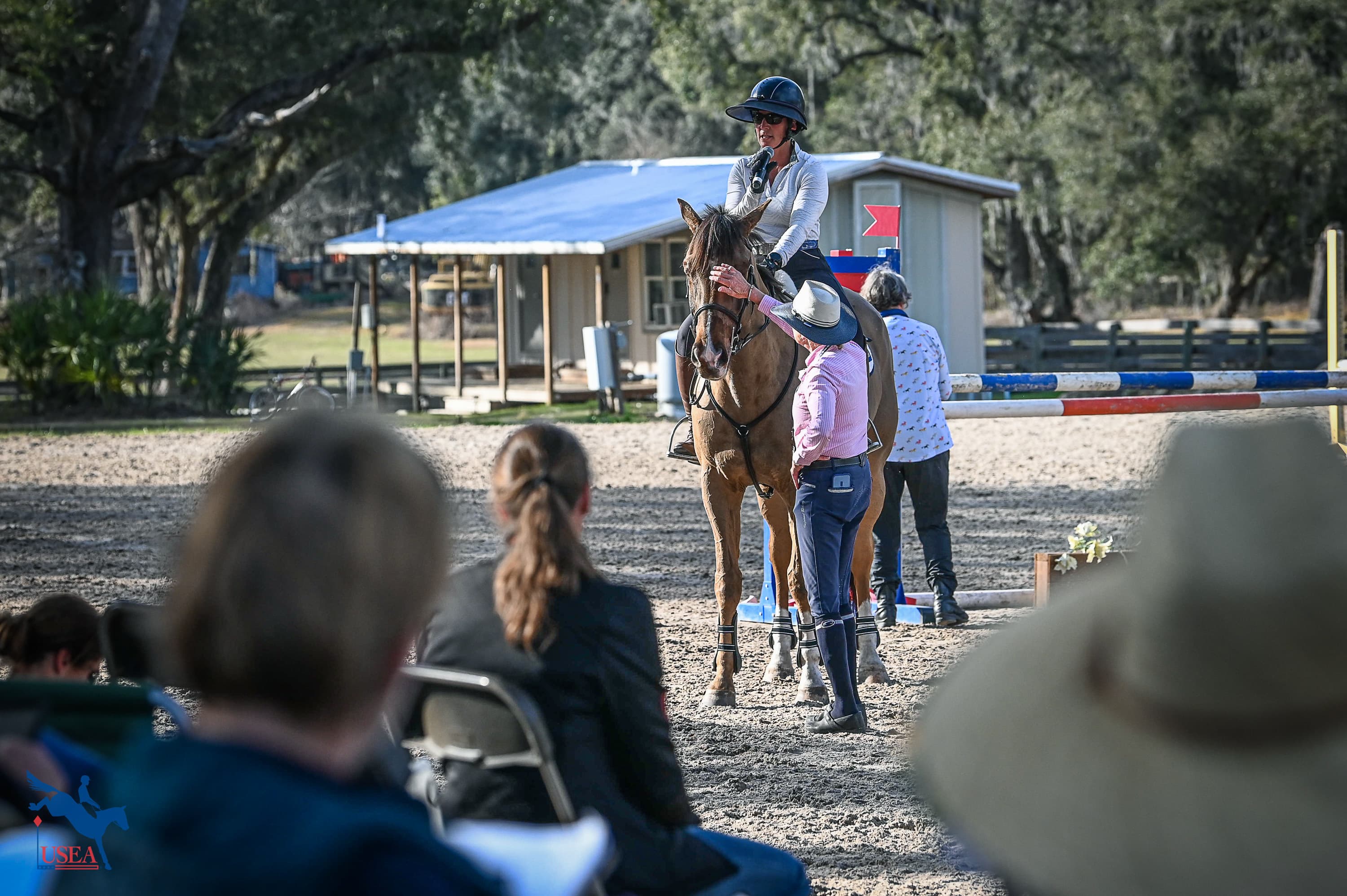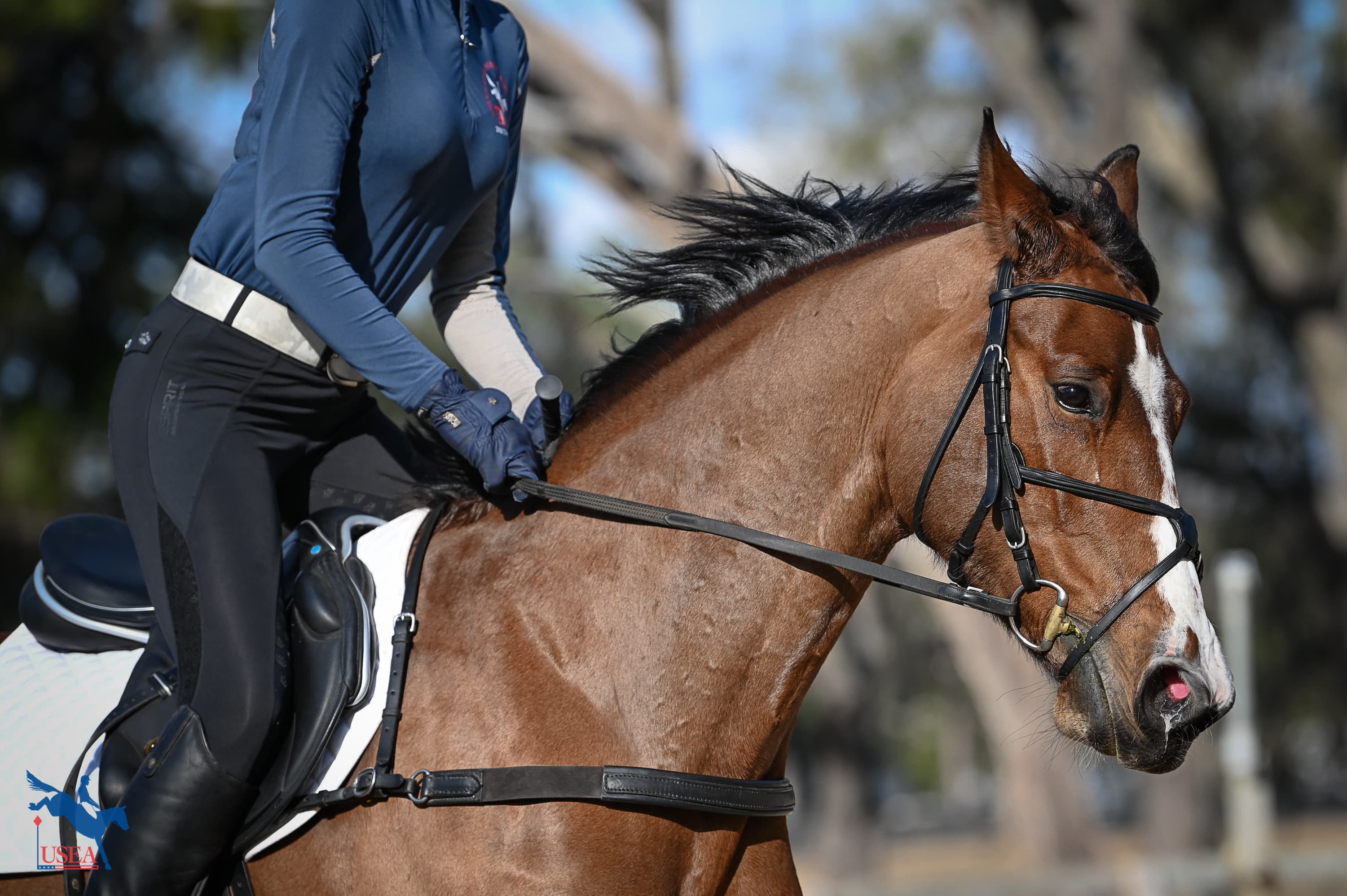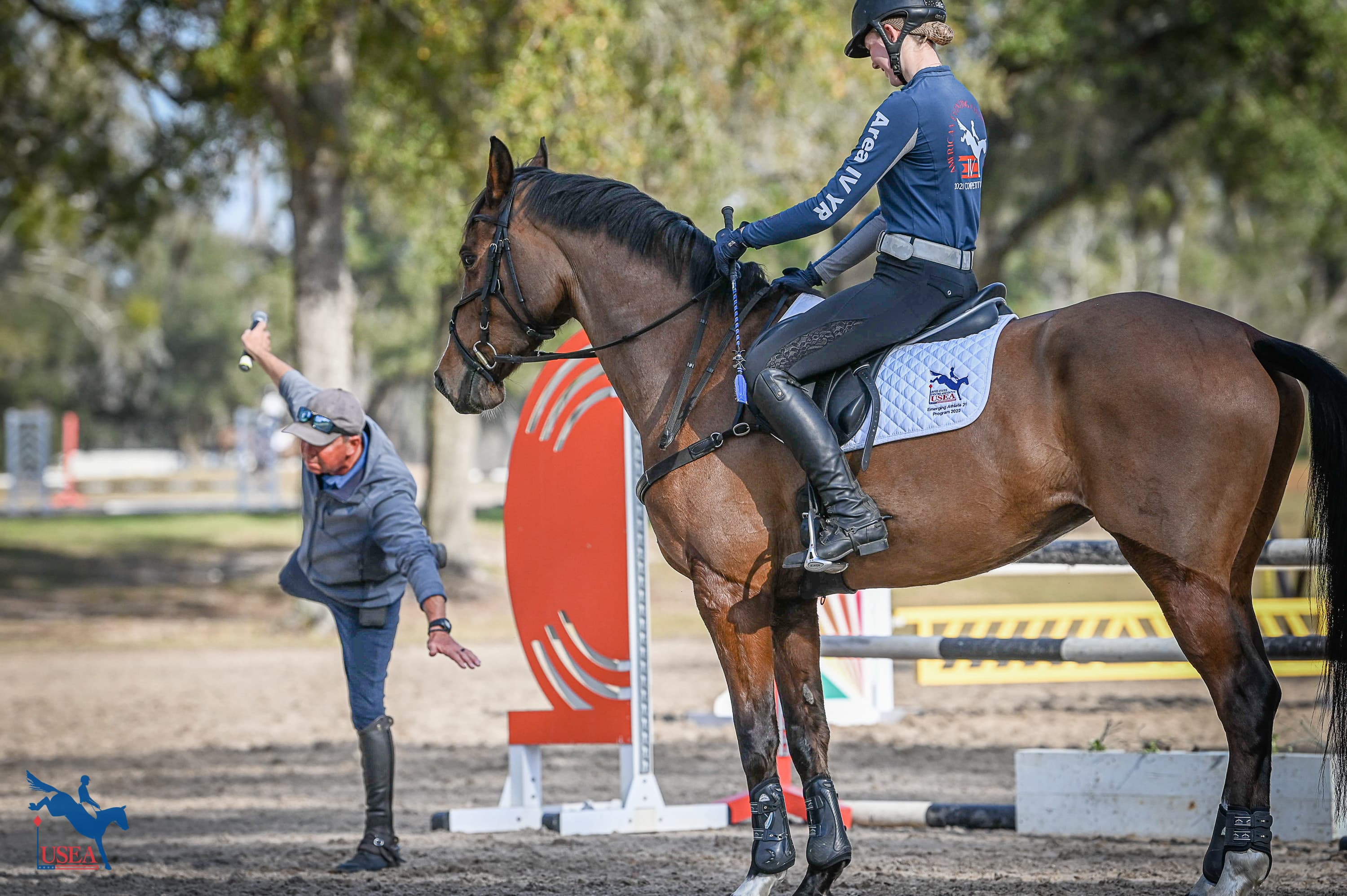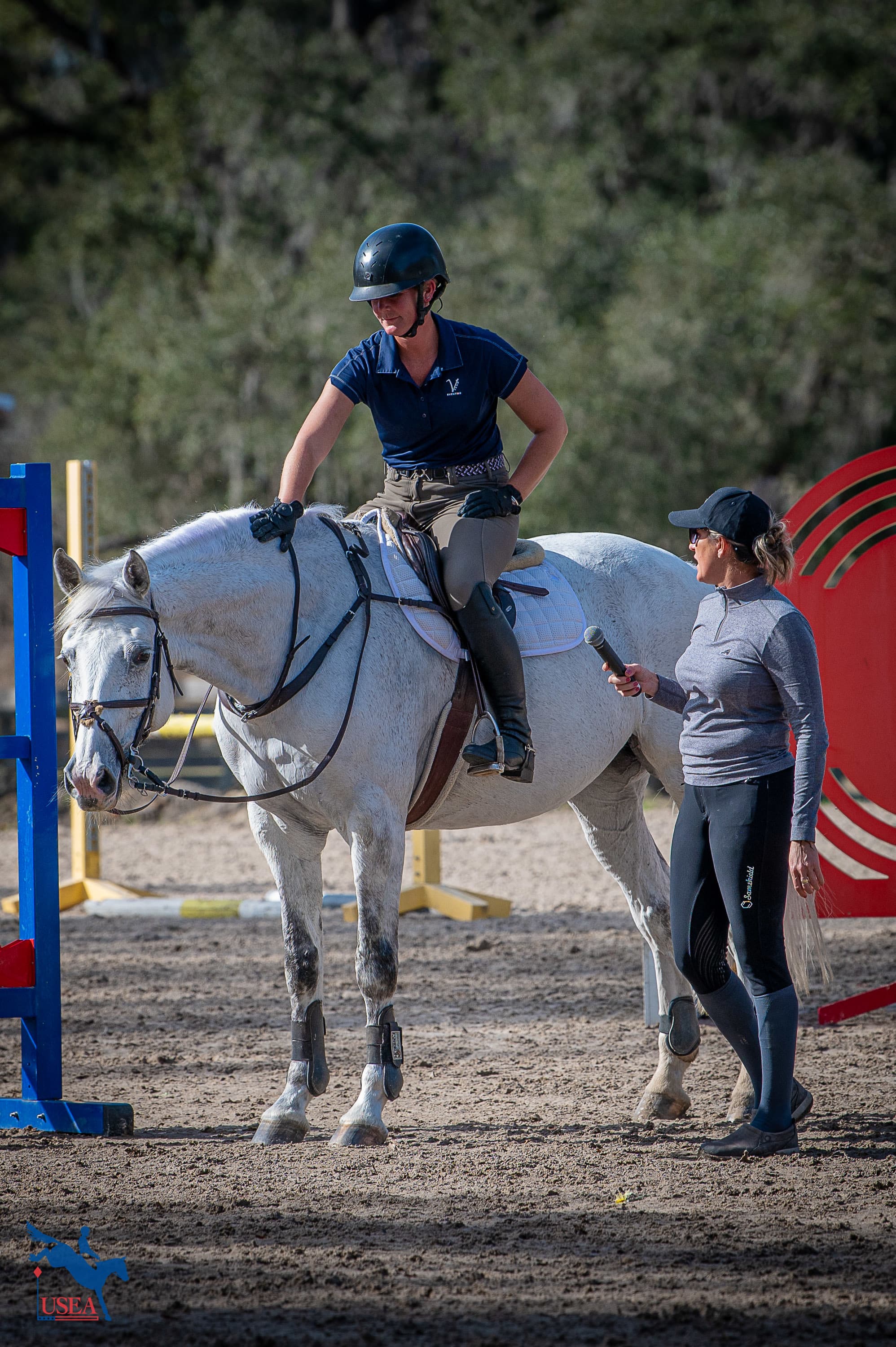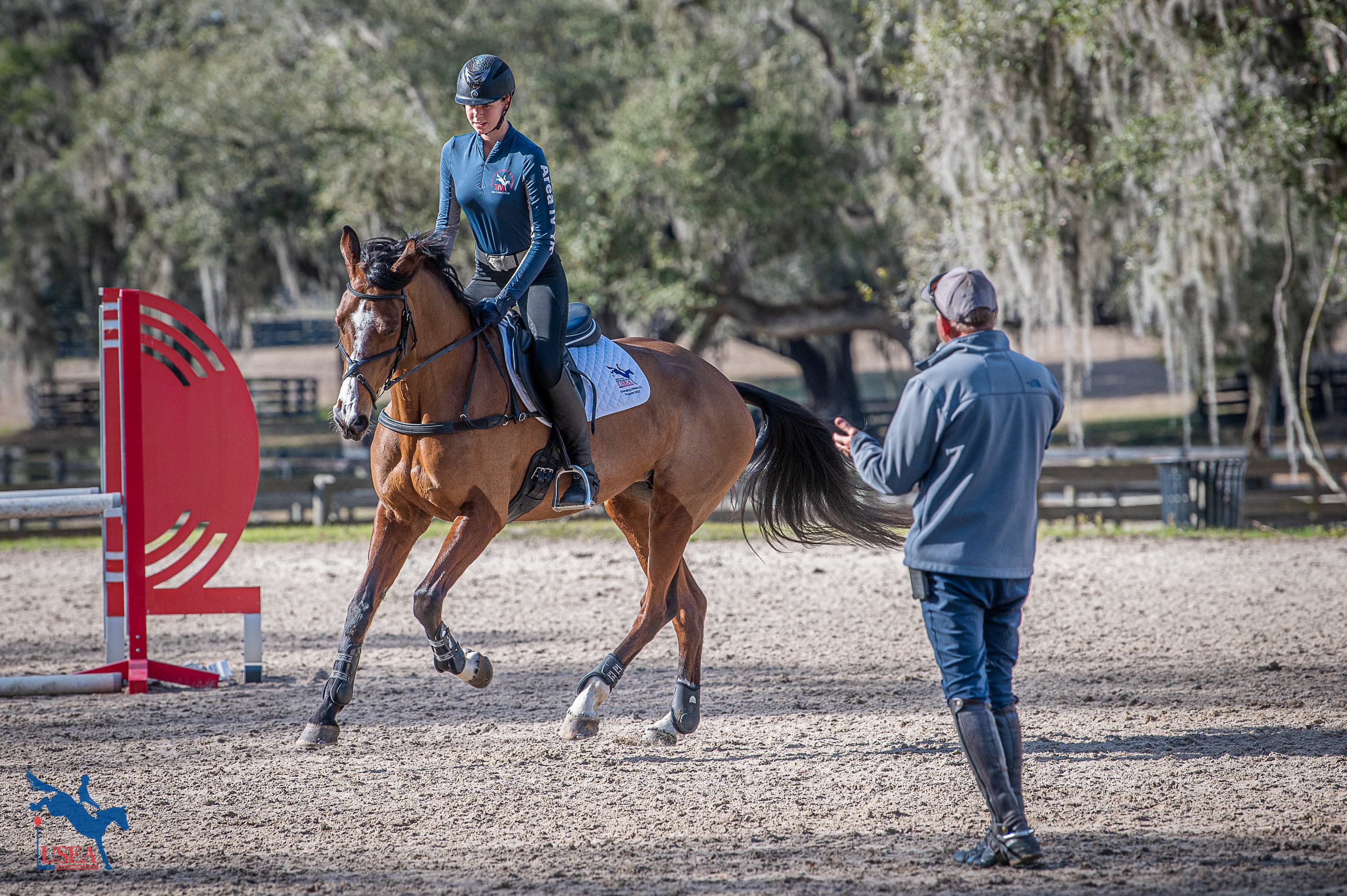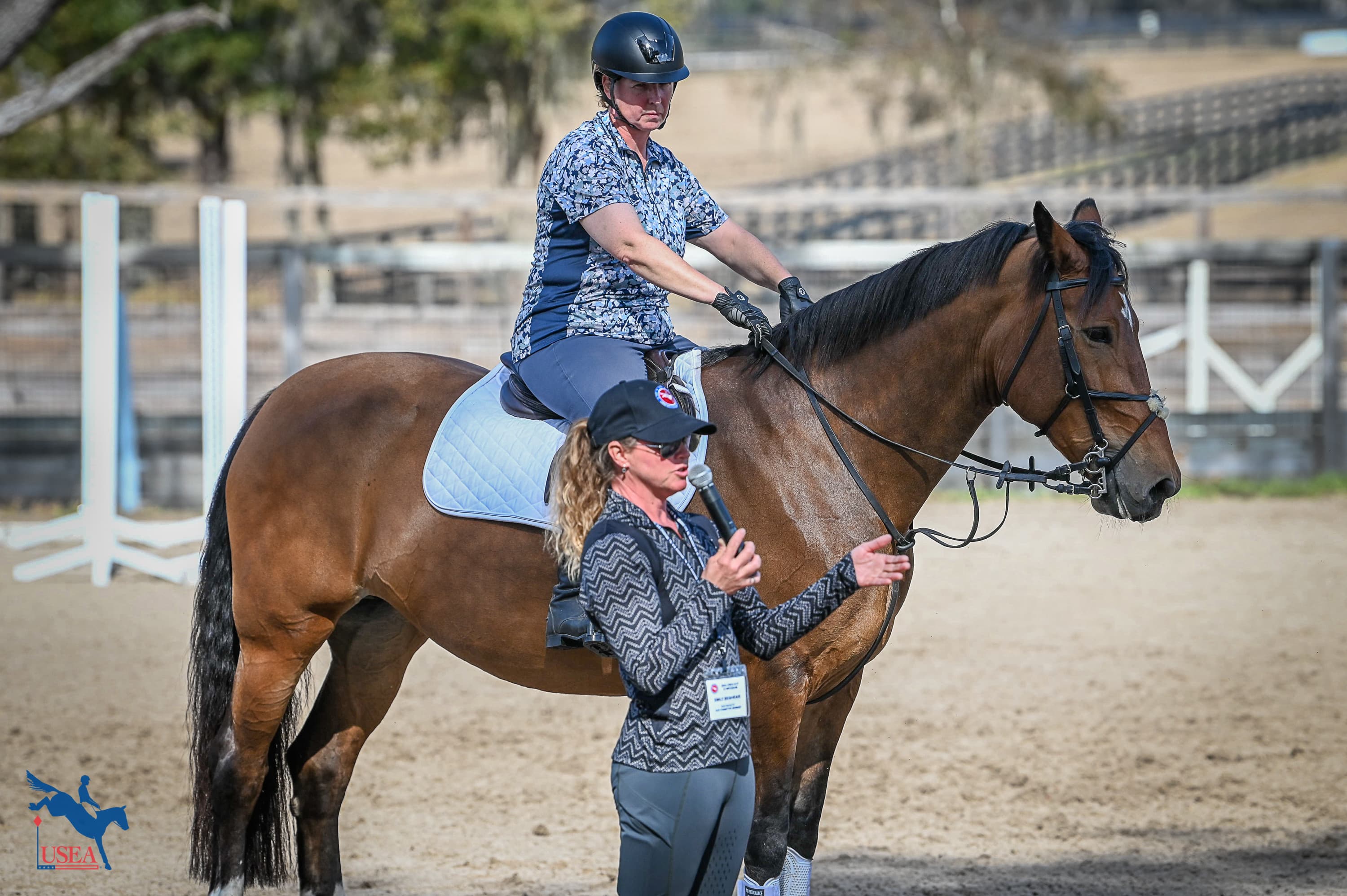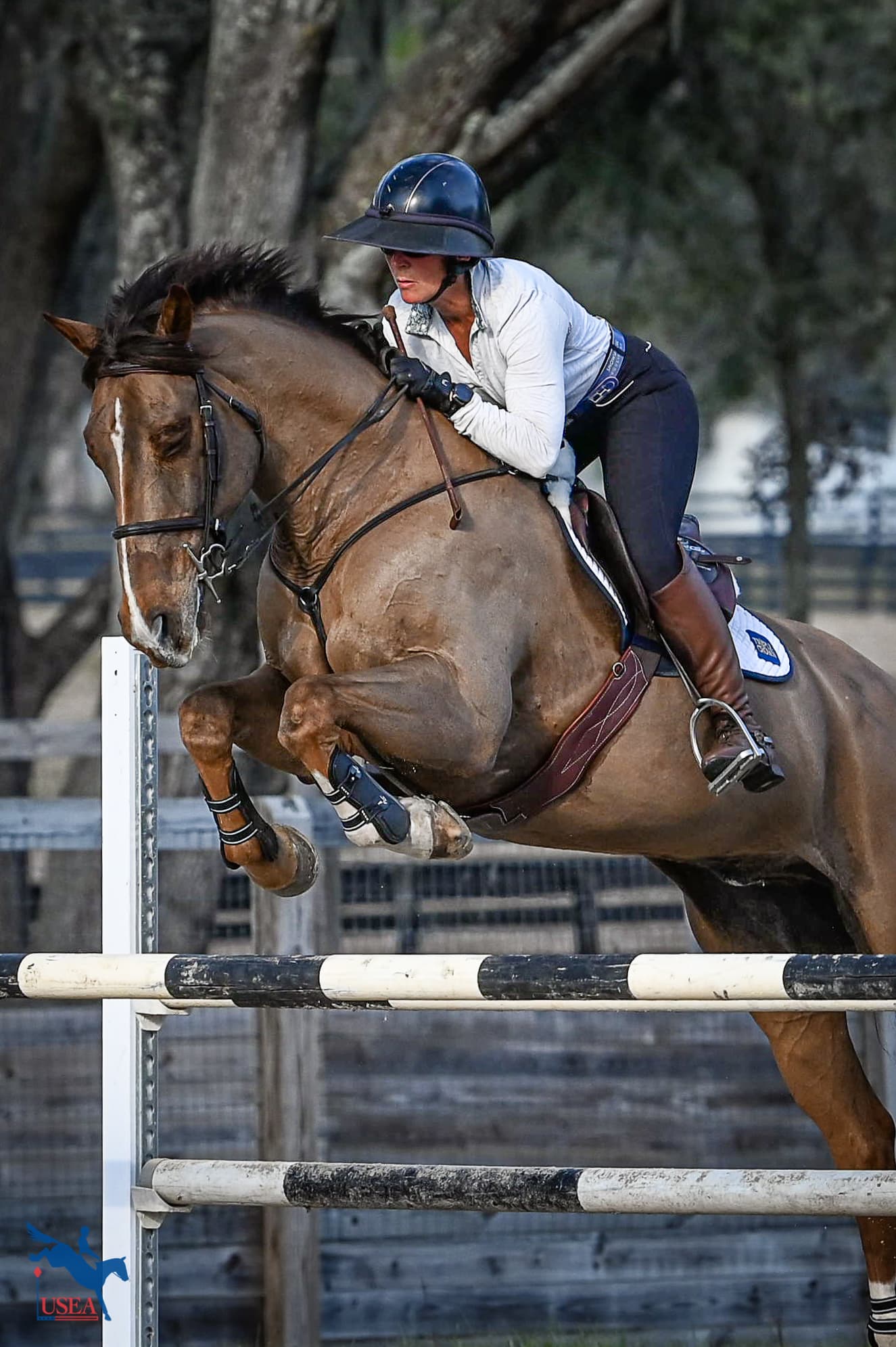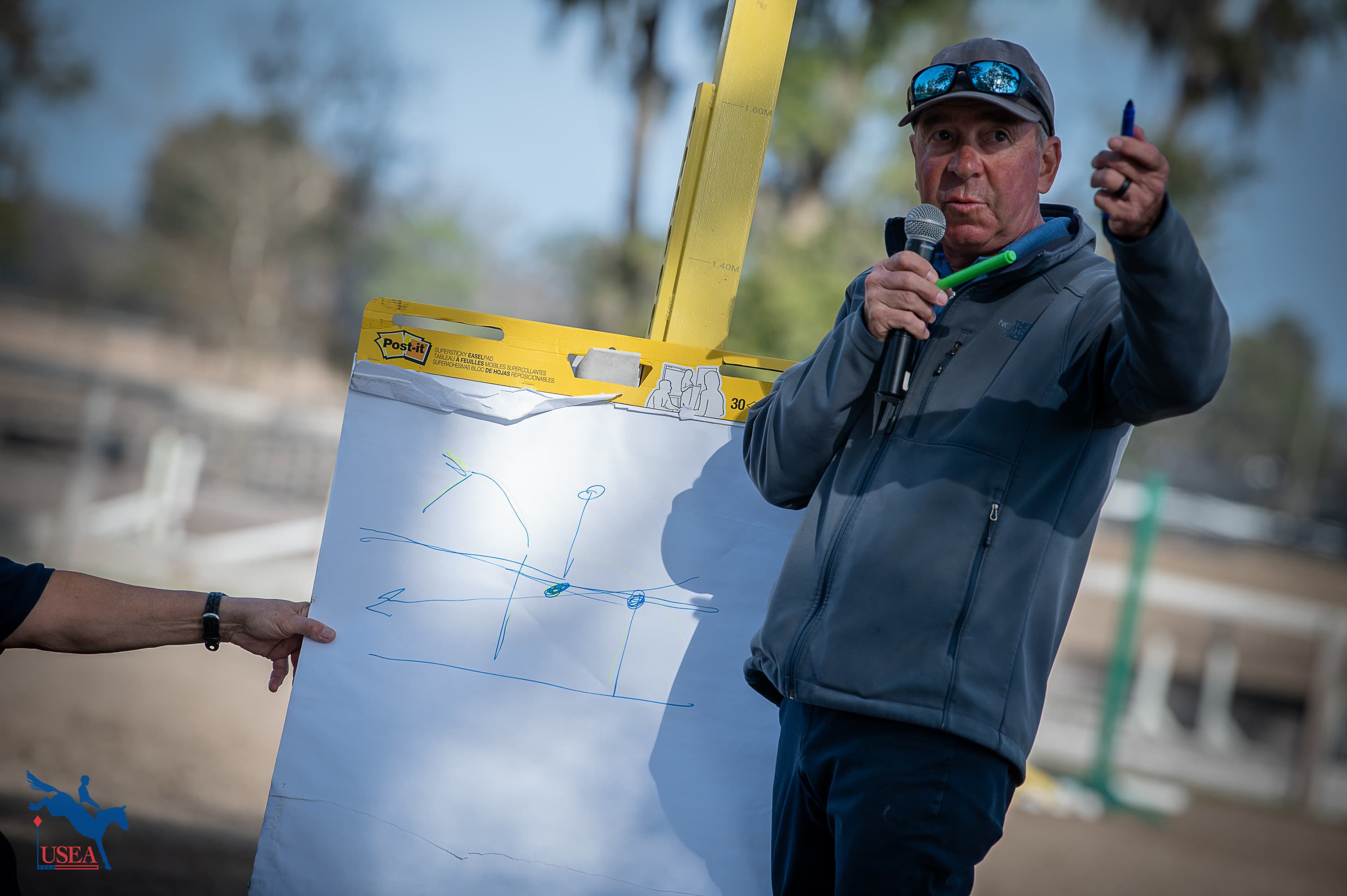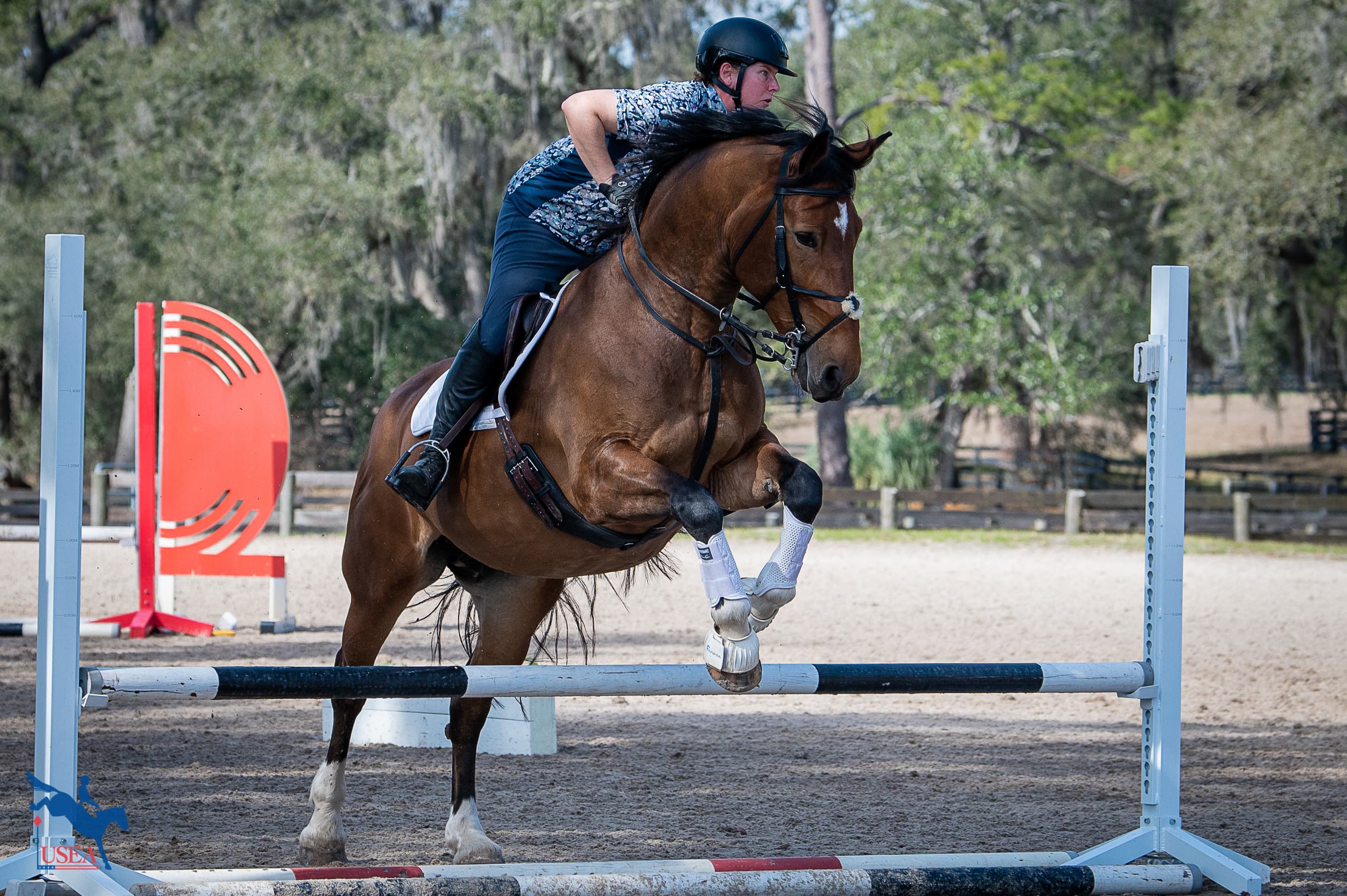The Five Rider Responsibilities in Show Jumping: 2023 ECP Symposium Day Two
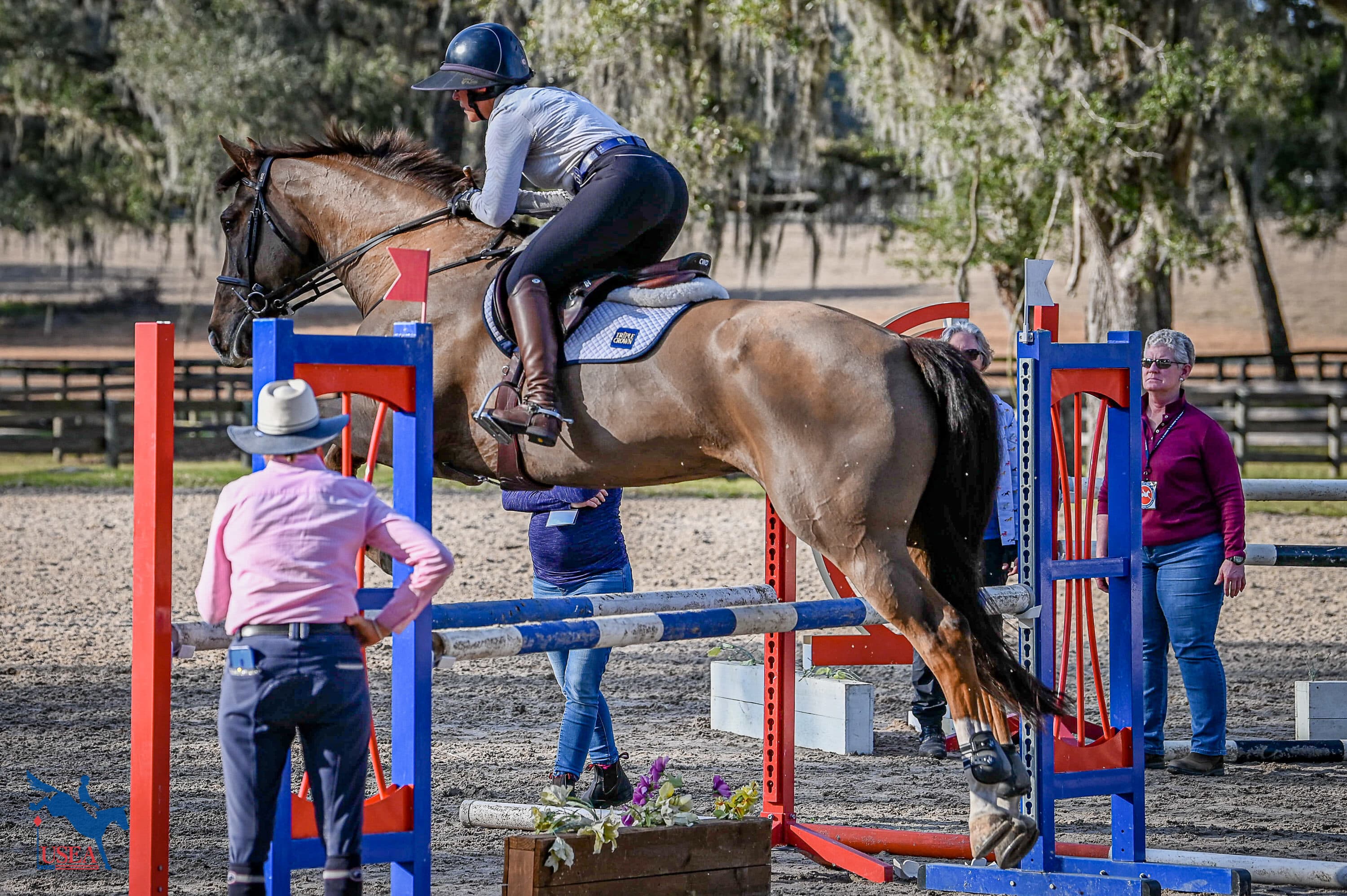
While the overall focus may have shifted from dressage to show jumping for the second day of the USEA ECP Symposium, the overarching themes from day one were a direct transition to the instruction during the second day of the educational event geared towards eventing coaches of all levels.
Sport Psychologist Dr. Paul Haefner kickstarted the morning by challenging instructors to think outside of the box when working with their students, responding to several real-life situations that instructors face every day when teaching students of all walks of life. Following his highly interactive session, ECP participants made their way out of the tent and to the ring for an explanation of show jumping concepts that trainers should be prioritizing and communicating to their students in their own programs at home.
ECP Faculty Member and Level V Certified Coach Karen O’Connor began the morning’s discussion by lining out the five rider responsibilities that she outlines in her own program that directly apply to all three phases, but especially show jumping:
- Direction: Which way do you want the horse to go and what part of his/her body do you want to direct him/her with?
- Speed: Speed is miles per hour and how fast you want to get there. It is important to note that speed and forward are two different words that often work together, but are quite different. Forwardness is the ability of the horse to stay out in front of you.
- Balance: There is a specific balance for every single test that you ask the horse to do, but in show jumping, it doesn’t vary as much as in cross-country because you are typically show jumping on flat ground.
- Rhythm: Rhythm is the sequential footfall of the gait. The walk has four beats, the trot has two, and the canter has three, so a horse who is out of rhythm at the canter may be doing the gait in four beats.
- Tempo: The amount of time it takes to start a stride, finish the stride, and then repeat.
“You do those five things and you do them correctly in the exercise and you get rewarded,” stated O’Connor. “What kind of rewards do you get? You start to get things that are in the training scale, you get relaxation, suppleness, impulsion, and roundness. Those are all byproducts of having the first set of rider responsibilities confirmed.”
As each demonstration rider made their way to the ring for the day’s sample lessons, instructors were encouraged to consider these rider responsibilities when creating lesson plans for each student. Were the riders being clear in their direction, speed, balance, rhythm, and tempo through their warmup, and would those responsibilities carry over into successful coursework? If not, it was up to the instructors to create a lesson plan that addressed the missing pieces to help the horse and rider have the most successful execution of the coursework asked of them.
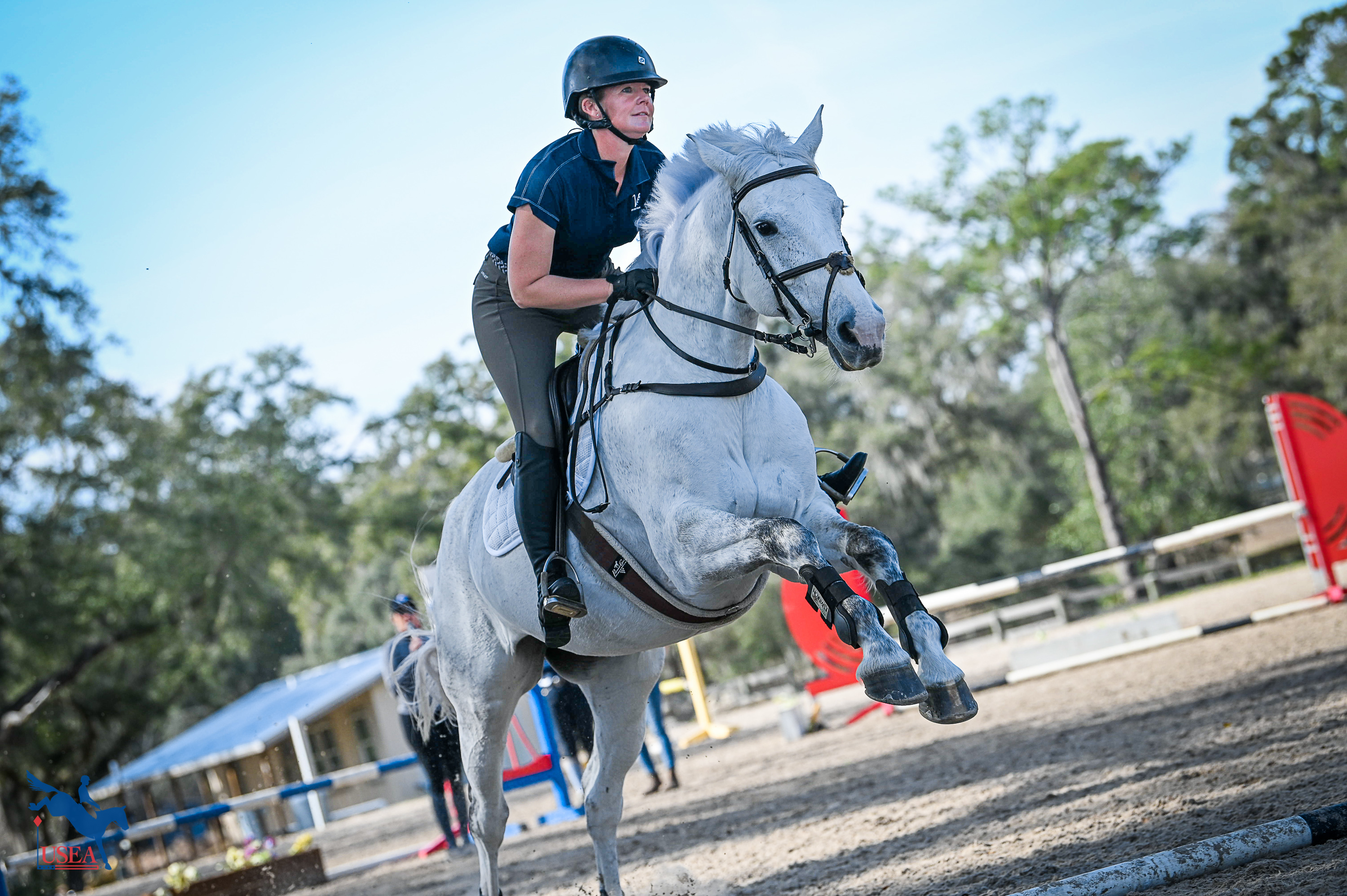
While the fence heights and exercises varied amongst the levels, participants could clearly see the traces back to those five rider responsibilities. Some lessons had more clear, specific focuses (for example Emily Beshear worked on direction in her Beginner Novice lesson with demonstration rider Nicky Tucker and her 15-year-old Belgian Draft cross mare Pandora by using flower boxes to create steering points for various approaches to a vertical fence, and Bec Braitling worked on speed by placing two poles on the ground and instructing Modified level pair consisting of 11-year-old Dutch Warmblood mare Hindine (Campbell 1 VDL x Lundiroodnoot) and owner/rider Clare VanderWoude), but O’Connor elaborated that every lesson should focus on each of those singular responsibilities, each time.
“Every one of them is important. We organize them in priorities, with direction being absolutely number one. We saw some lessons today where horses were jumping off to one side and of course, that is hugely important at the upper levels, but also at the lower levels where the rider’s maybe don’t have full control. The speed – every trick that you do out there, whether it is eventing, dressage, show jumping, or barrel racing, has a required speed for every task you are asking the horse to do and within that speed is a required balance. And then, of course, there is the rhythm and tempo.”
In O’Connor’s lesson with Intermediate rider Steph Goodman and her 14-year-old Irish Sport Horse gelding Drs Resolute (Radolin x Royal Queen B), she tasked Goodman to pilot her horse over several different coursework exercises which required the pair to execute square turns, teardrops, and conquer more challenging bending lines appropriate for the level. That being said, O’Connor reflected that those concepts are no different for a Beginner Novice rider than they were for her Intermediate rider and traced those concepts back to the world of equitation.
“When you look at the kids in the equitation world, they are just 14 or 15 years old and their equitation is immaculate, but not just in their position, but in their execution in the navigation of the line they are pursuing from start to finish. It is instilled in their teaching from the very beginning. You would never see those riders cut the turn because they need to make sure the horse is on the correct lead before the turn, not in the turn. Many, many event riders wait until the turn and then make a bigger move to get the change, then the horse changes in the front, but not the hind. Next thing you know, you are coming around to the jump and there is no time.”
The day wrapped up with ECP Faculty discussing the ECP Assessment process and what instructors are looking for in a positive Assessment for ECP certification. Individuals interested in learning more about ECP Certification can find the upcoming Assessment and Workshop calendar here, access more information about the Assessment process here, and get helpful tips here.
Thursday, January 19 marks the final day of the 2023 ECP Symposium and participants will be treated to a similar interactive format on the beautiful cross-country grounds at Barnstaple Eventing.
To learn more about this week’s ECP Symposium, click here. Onsite registration is available each day during the event. ECP certified and licensed officials can sign up each day for $45 a day, while public participation is $60 a day.
About the USEA Eventing Coaches Program
Instructors are essential to the training of riders and horses for safe and educated participation in the sport of eventing. The USEA Eventing Coaches Program (ECP) was initiated in 2002 to educate all levels of eventing instructors with essential training principles upon which those instructors can continue to build throughout their teaching careers. ECP offers educational workshops and assessments by which both regular instructors, Level I through Level V, Young Event Horse (YEH) instructors, and Young Event Horse professional horse trainers can become ECP certified. Additional information about ECP’s goals, benefits, workshops, and assessments as well as names and contact information for current ECP-certified instructors, YEH instructors, and YEH professional horse trainers are available is available on the USEA website. Click here to learn more about the Eventing Coaches Program.
